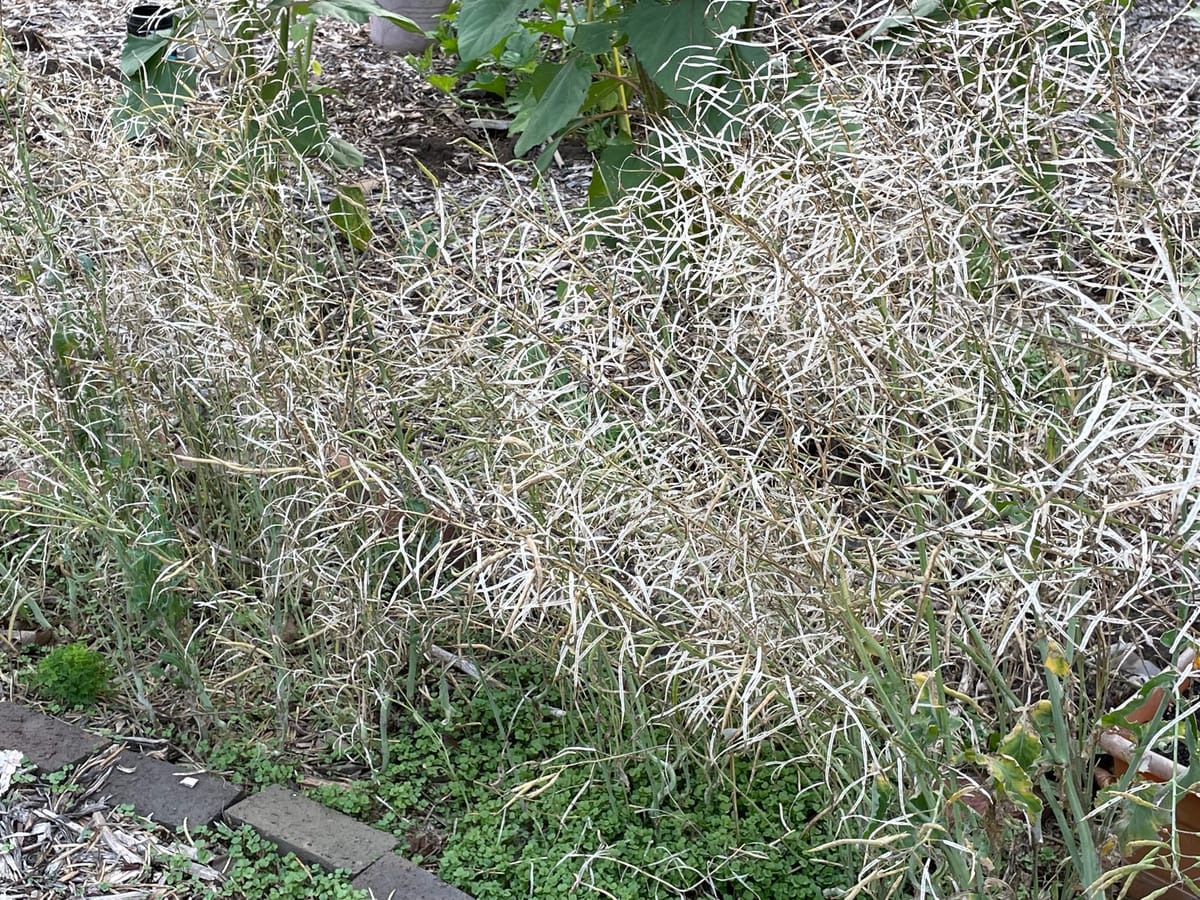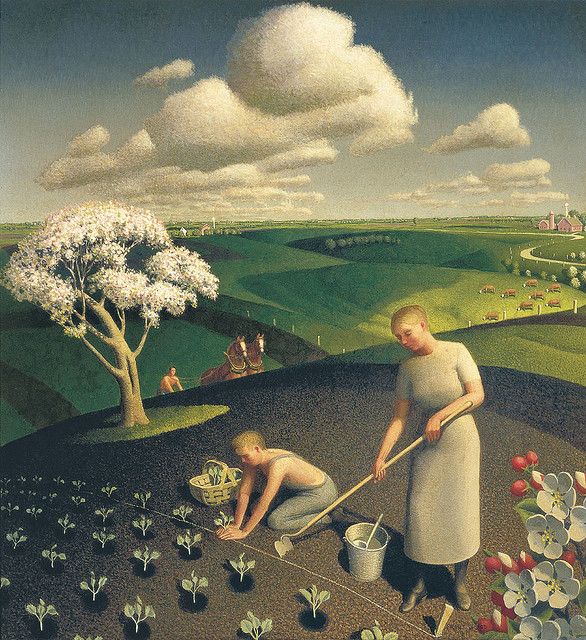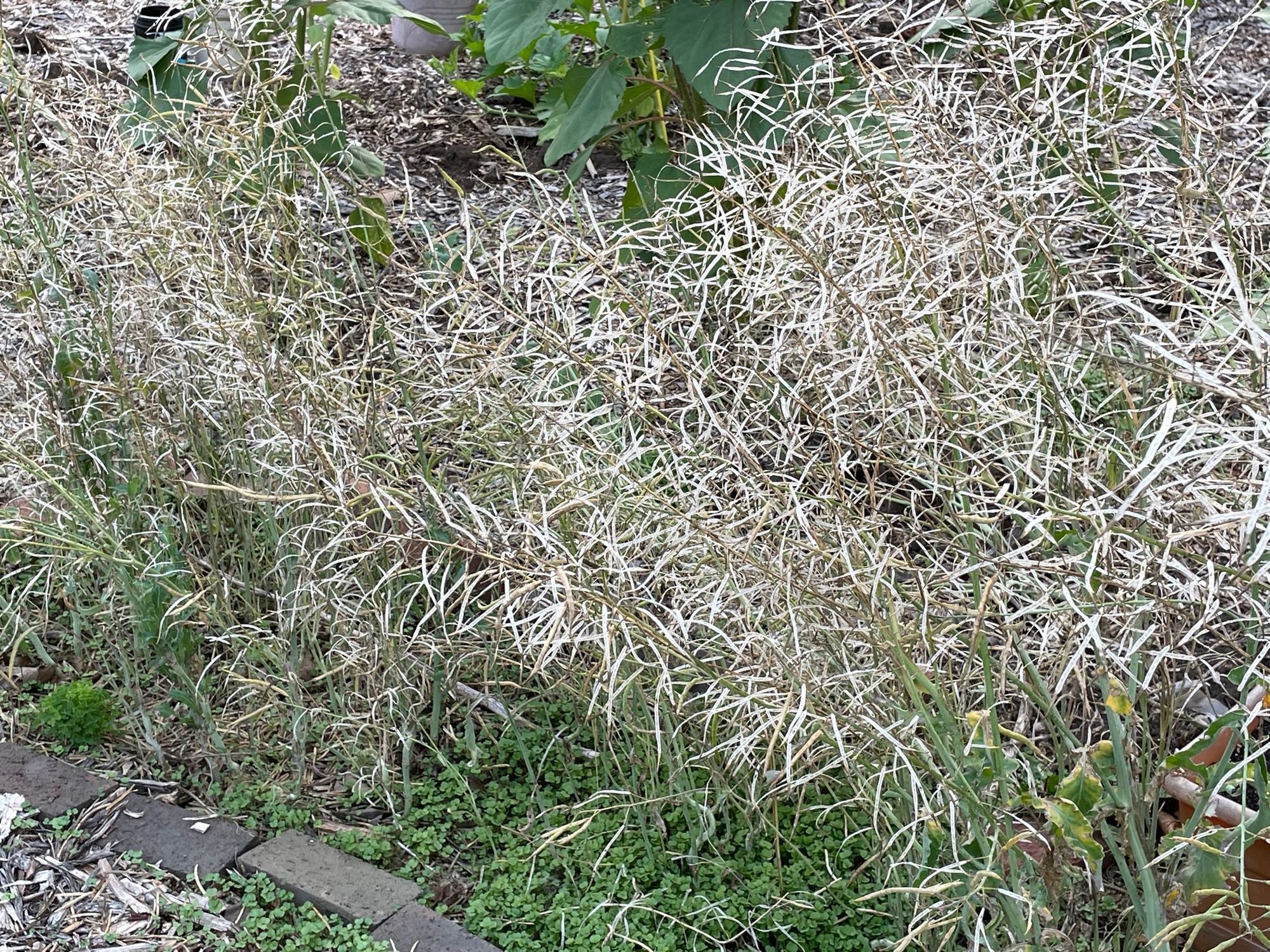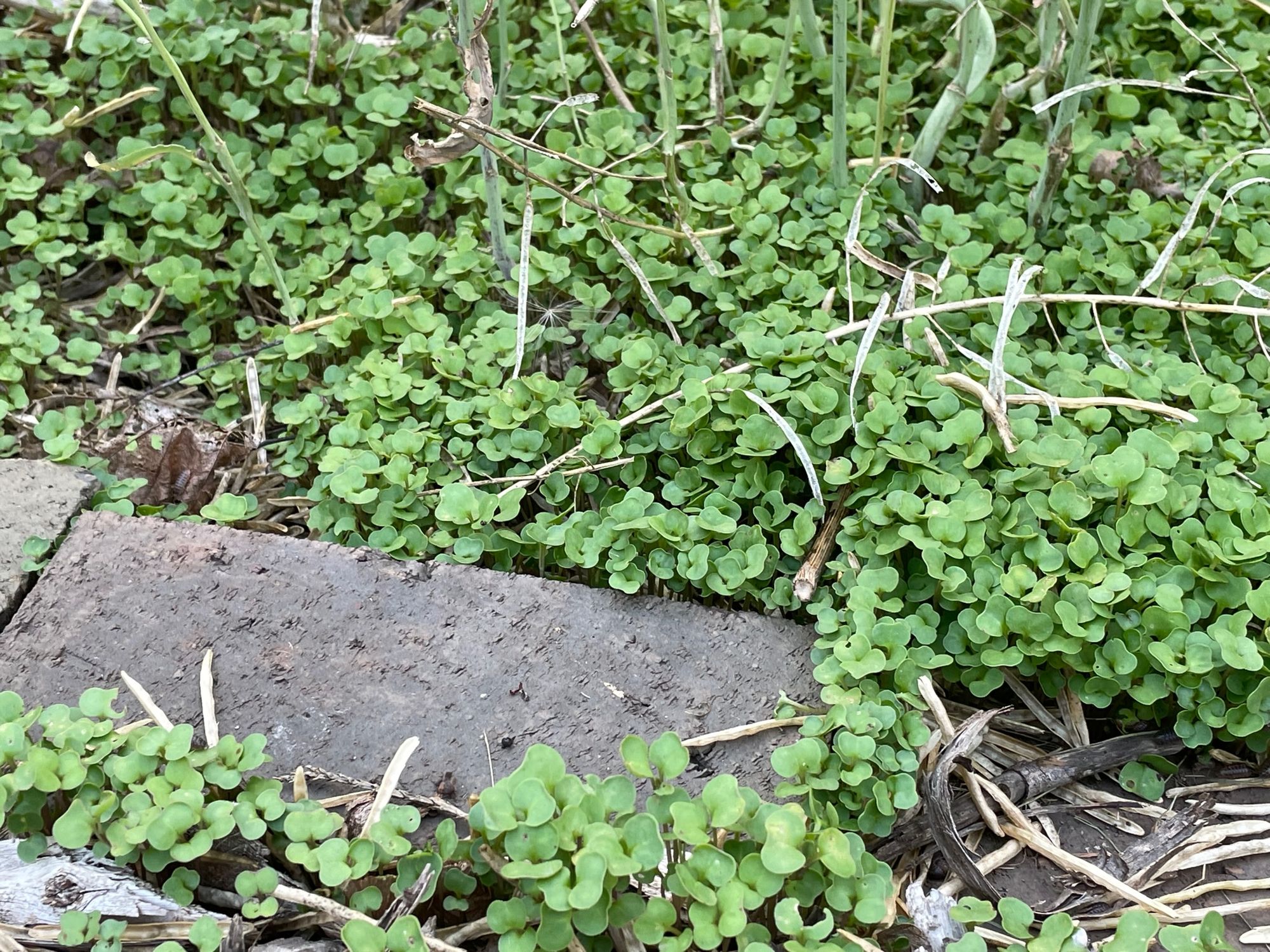I Garden by Accident
With a "kale kicker" application

Wild vegetable gardening is just like socialism: it works great if you don't want to eat.

But that doesn't mean we need to obsess over every aspect of the garden. In fact, we shouldn't obsess over any aspect of the garden and ought to leave many elements of the garden to "do their own thing."
That is the leitmotif of Carol Deppe's excellent The Tao of Vegetable Gardening, a book that offers the most practical advice of all: when to do, and when to do nothing.
She might have called it the Wu-wei of Vegetable Gardening. "Trying not to try in the garden."
A Dialogue Between the Hemispheres
It's hard not to try when trying, especially for us left-hemispherics, who tend to scheme, plan, and fret, trying to control every step, even the ones that are months from arriving.
The effort requires a re-assertion of the right hemisphere.
A dialogue between the hemispheres when it comes to gardening might go like this:
Left Hemisphere: "We need to do X, Y, and Z, on dates A, B, and C, using elements M, N, and O."
Right Hemisphere: "Let's just spend 30 minutes every day in the garden, maybe two hours on the weekends, do whatever strikes us during those times, then read poetry."
Left Hemisphere: "Just do whatever, for a set time period, then knock off, regardless of what else needs to be done? Do you think that'll work?"
Right Hemisphere: "The heck if I know, but I know your way isn't going to work and I can see you're not even aware that your way isn't going to work. You might get a good result, but it won't come from the planning you're doing now."
Left Hemisphere: "I don't get it. Explain exactly how your plan will bring it all together."
Right Hemisphere: "I don't get it either. I can't explain it and I don't know if it'll bring it all together."
Left Hemisphere: "That's insane."
Right Hemisphere: "Okay."
Left Hemisphere: "And by the way, are you going to read the poetry to the plants? Does that get rid of blossom end rot?"
Right Hemisphere: "I'm done here."
Accidental Gardening is Right-Hemispheric Gardening
So, I fully embrace the right-hemispheric rejection of left-hemispheric solutions to the weed problem, like the wild vegetable garden idea. I also reject all other left-hemispheric approaches that involve aiming, striving, fretting, planning, and successing-at-all-costs.
Perhaps the biggest symbol of this right-hemispheric approach?
The embrace of accidental gardening.
d. Accidental Gardening: Accepting and implementing whatever the garden offers up, even (especially) if it wasn't in the plans.
Volunteers are Accidental Gardening
The easiest form of accidental gardening: Accepting volunteers.
Use open-pollinated seeds and let your plants go to seed. They will then drop their seeds next to the plant or scatter the seeds to all areas of the garden (I've had lettuce seeds crop up in sidewalk cracks 25 feet away from the garden).
In the fall or the following spring, see what plants crop up "voluntarily." You can then ask your left hemisphere whether you should weed them out, move them to a better location, or simply leave them to grow in their current location.
I've had a lot of success ("luck," "good fortune") with this approach when it comes to greens.
My garden produced dozens of lettuce plants this year without me doing anything.
Carpets of Kale from Accidental Gardening
My garden also produced carpets of kale.
Lettuce plants tend to bolt upright, leaving their seeds to blow all over the place. Kale plants tend to get top-heavy, bend or break, then drop their seeds in one place.
The result: carpets of kale in the spring and summer (though a handful of renegades escape and blow to other areas of the garden, producing other plants that, in turn, create carpets of kale and a few renegade parachuters).
Now, kale hates summer heat. It simply wilts.
But that's okay. The kale plant knows what it's doing. By bending or breaking, its huge stalks and branches create shade for the carpets of kale, insulating it from the hottest weather.
And they thrive . . .
Well, mostly.
The natural inclination is to leave the kale plant to do its thing and then reap the carpets (which I mostly harvest at the "baby kale" stage and put in my smoothies).
But kale needs nutrients. I find that, if I don't fertilize the kale carpets, they won't do well, so I fertilize heavily with fish emulsion, which provides nitrogen. You might also need to water it more frequently in general if your July/August is dry.


